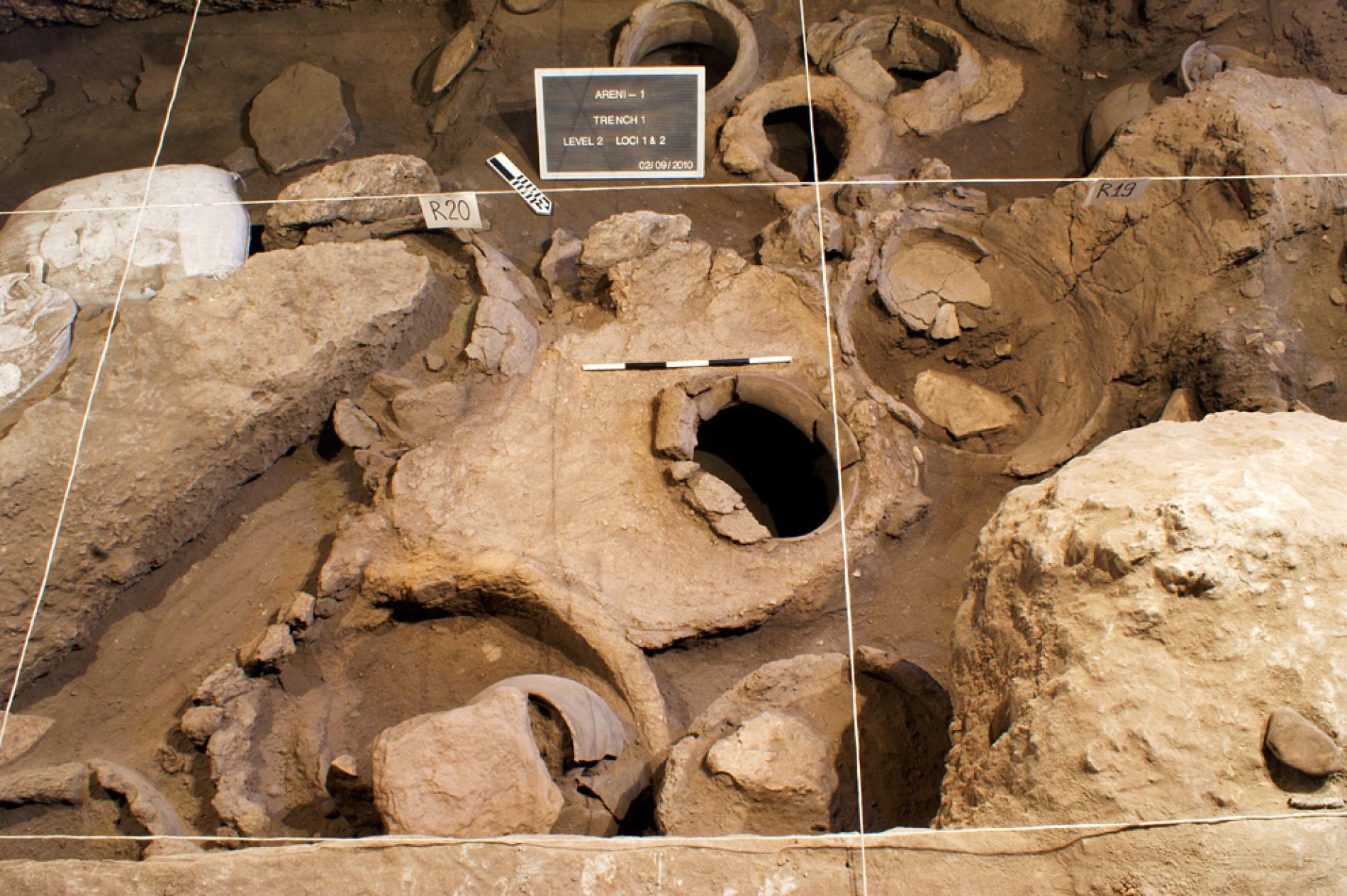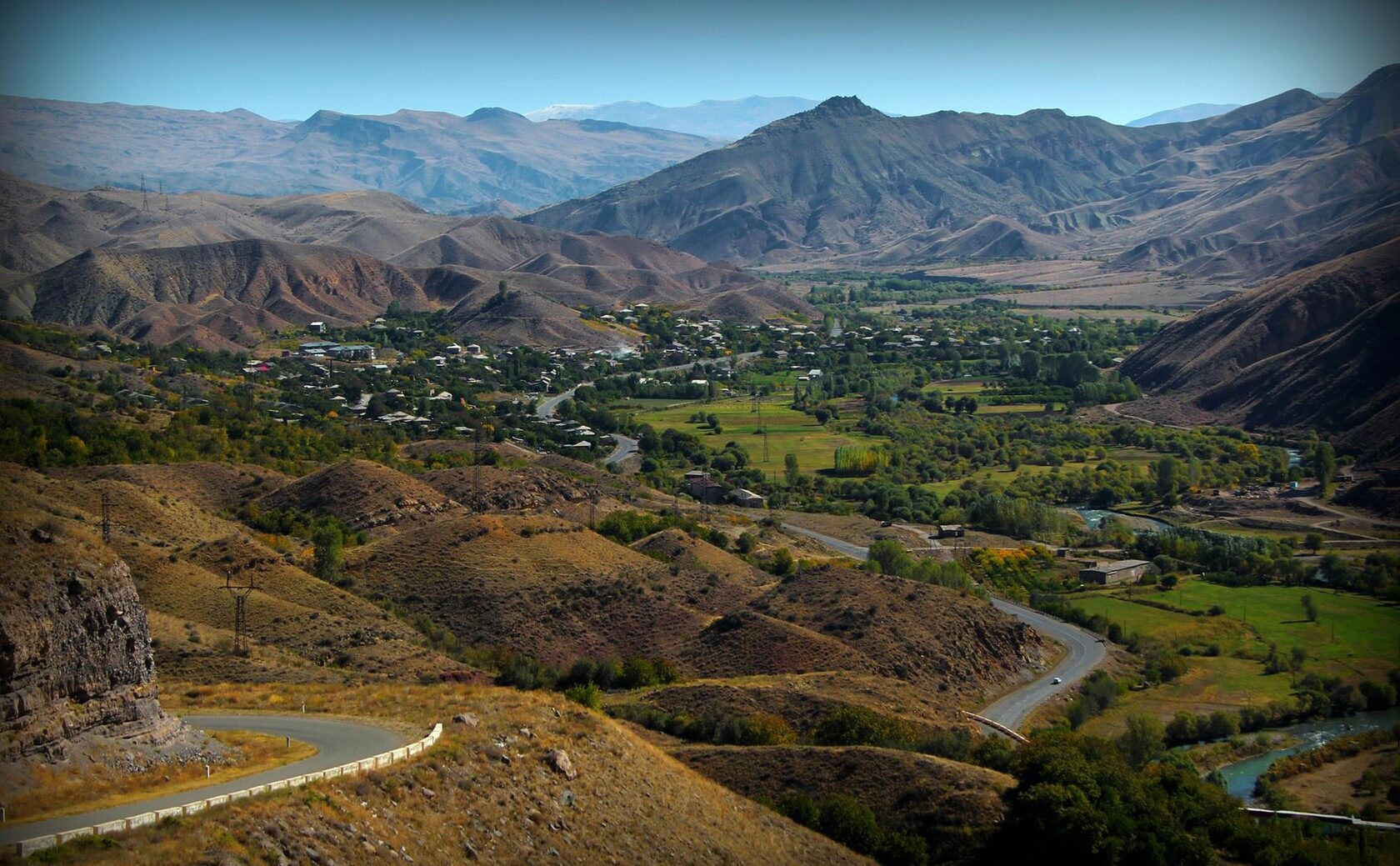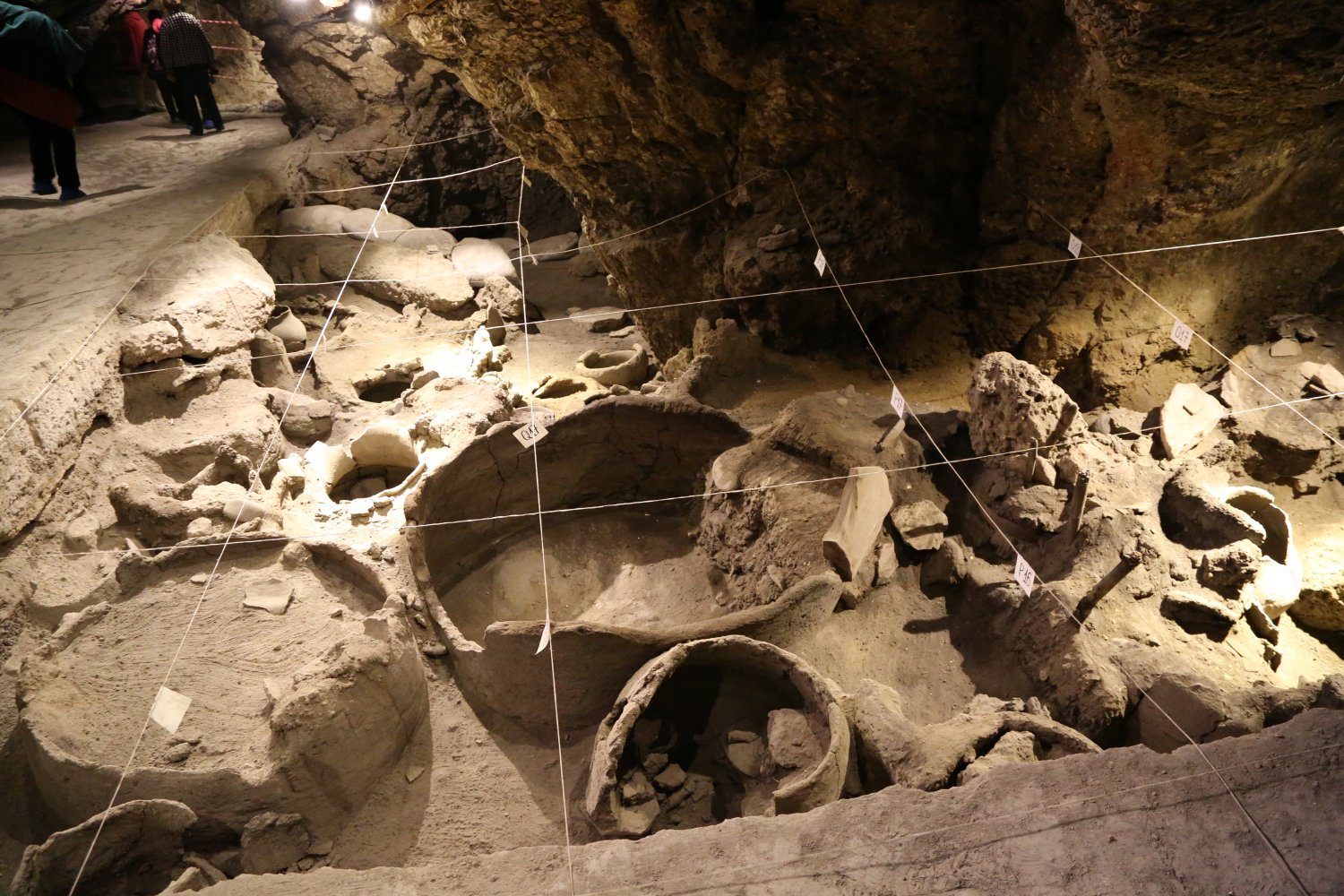REVIVAL OF A LEGEND
In the cave, clay vessels (karases) with remains of wine, grape seeds, and winemaking tools were preserved in excellent condition.
The most ancient evidence of wine production on the territory of modern Armenia is “Areni-1” archaeological complex in Vayots Dzor region. The winemaking complex, which according to scientists is between 6000-6200 years old, is located in a karst cave, and until 2007 it was hidden not only from the eyes of visitors, but also from the eyes and cameras of scientists. Archaeologists suppose that the cave and the entire wine-making complex had a ritual purpose. Areni Cave or Bird Cave, as it is often called, is also famous for the fact that, among many important finds, the oldest leather shoe was discovered here.

The golden age of Armenian winemaking can be called the reign of the kingdom of Urartu.
During this period, the vineyards mainly belonged to the royal nobility and were founded with state funds. The Urartian rulers in the occupied territories first of all planted vineyards, which were known by their own names, for example, “Menua vineyard”, “Sarduri vineyard”.
In parallel with planting vineyards, the Urartian rulers created irrigation systems – water reservoirs, canals, etc., some of which (in Etchmiadzin, Sardarapat, Ashtarak, etc.) are still functioning.
In parallel with planting vineyards, the Urartian rulers created irrigation systems – water reservoirs, canals, etc., some of which (in Etchmiadzin, Sardarapat, Ashtarak, etc.) are still functioning.

The important role of viticulture and winemaking in Armenia is evidenced by decorations with grape patterns found at different times, as well as tombs of Armenian kings.
Figures of grapes and grape leaves can be seen skillfully carved on the walls, in stone. In IV BC Armenian wines were so popular that the capital of Armenia, Vagharshapat city, became the center of wine trade.
Viticulture and winemaking in Armenia continued to develop in Hellenistic times, and after the adoption of Christianity in Armenia, winemaking began to be practiced in churches. Almost all large monasteries and churches had small wine presses and cellars.
In the Middle Ages, first taverns appeared in Armenia (“ginetun” in Armenian, is translated “house of wine”).
Viticulture and winemaking in Armenia continued to develop in Hellenistic times, and after the adoption of Christianity in Armenia, winemaking began to be practiced in churches. Almost all large monasteries and churches had small wine presses and cellars.
In the Middle Ages, first taverns appeared in Armenia (“ginetun” in Armenian, is translated “house of wine”).
The history of Armenian
wines was revived at the end
of the 19th century, when Nerses Tairyan,
and after him many entrepreneurs, began
to produce wines, fortified wines
and brandy of fairly high quality.
wines was revived at the end
of the 19th century, when Nerses Tairyan,
and after him many entrepreneurs, began
to produce wines, fortified wines
and brandy of fairly high quality.

Armenian «Madeira» from the 1902 harvest, for example, was awarded an international prize, and during the Soviet years, Armenia became known as the birthplace of many sweet, strong and fortified wines.
The history of Armenian wines was revived at the end of the 19th century, when Nerses Tairyan, and after him many entrepreneurs, began to produce wines, fortified wines and brandy of fairly high quality.
The history of Armenian wines was revived at the end of the 19th century, when Nerses Tairyan, and after him many entrepreneurs, began to produce wines, fortified wines and brandy of fairly high quality.



